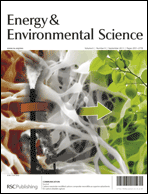Current solar cell research focuses on increasing the power conversion efficiency (PCE) by employing multiple junctions. A new review by Adebanjo et al. provides an overview of the recent results.

The article also reviews current materials used as active and interconnecting layers. Fullerenes are commonly employed as acceptor materials. Donor materials are most often polymers like P3HT. These can be tuned by structural modification for better absorption of different light spectra. Metal-oxides or transition-oxides are finally used for recombination and injection layers.
Current PCE’s do not reach the maximum value, e.g. 9.64% for a triple junction instead of 22.3%. Adebanjo et al. point out that the design of absorbing polymers, the selection of interconnecting layers and overall stack design are closely interconnected. In consequence, optimisation of the devices is achieved by tuning several parameters.
By Sebastian Axmann
Take a look at the review in EES:
Triple Junction Polymer Solar Cells
Olusegun Adebanjo, Purna Maharjan, Prajwal Adhikary, Mingtai Wang, Shangfeng Yang and Qiquan Qiao
DOI: 10.1039/C3EE42257G, Review Article














